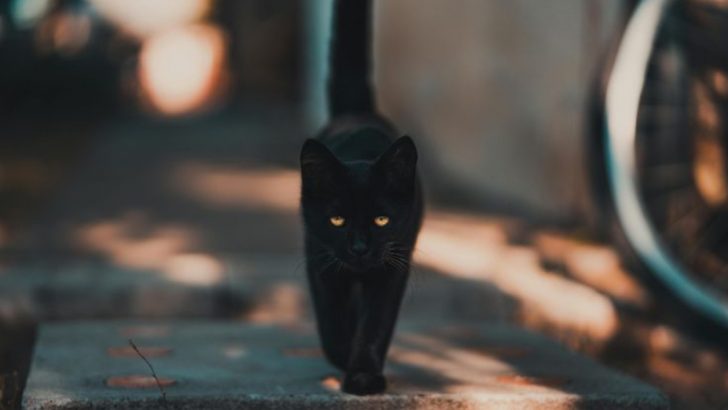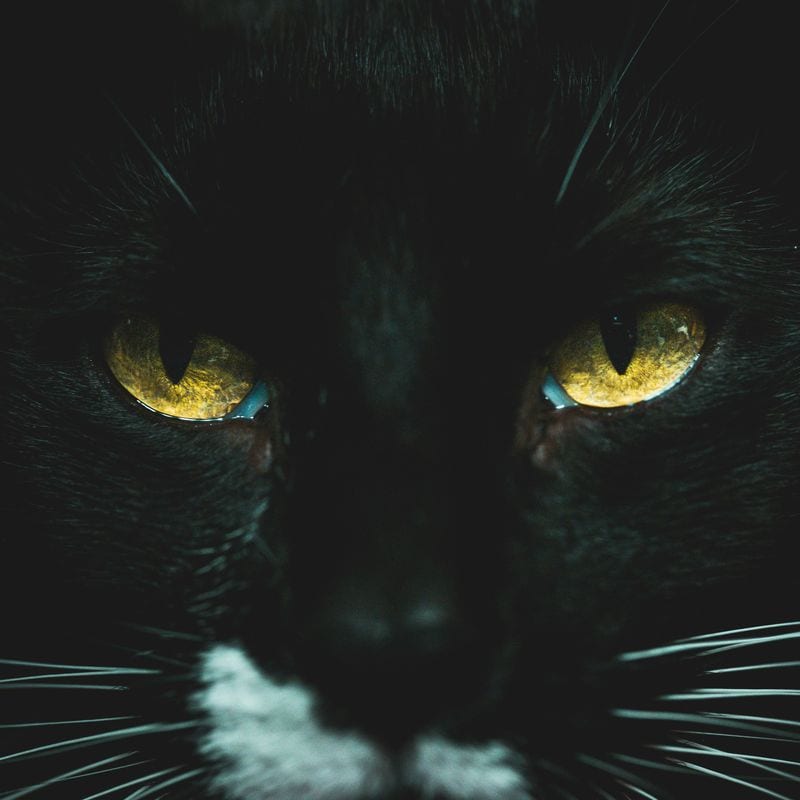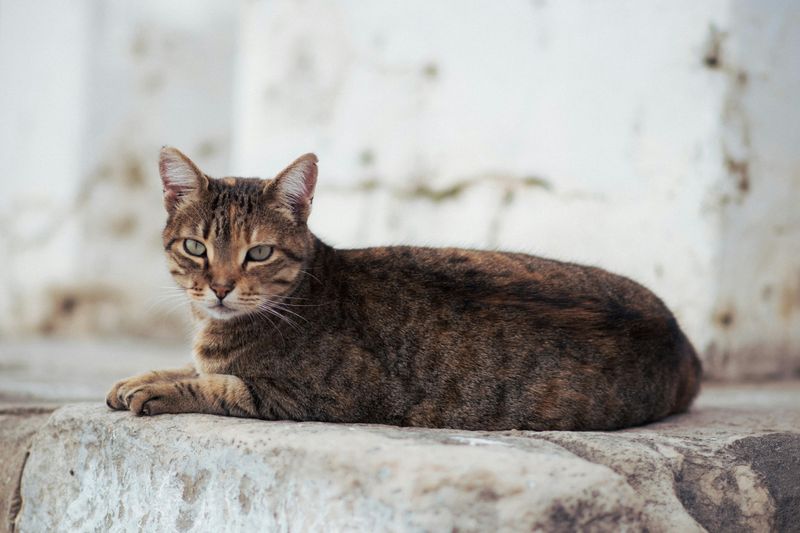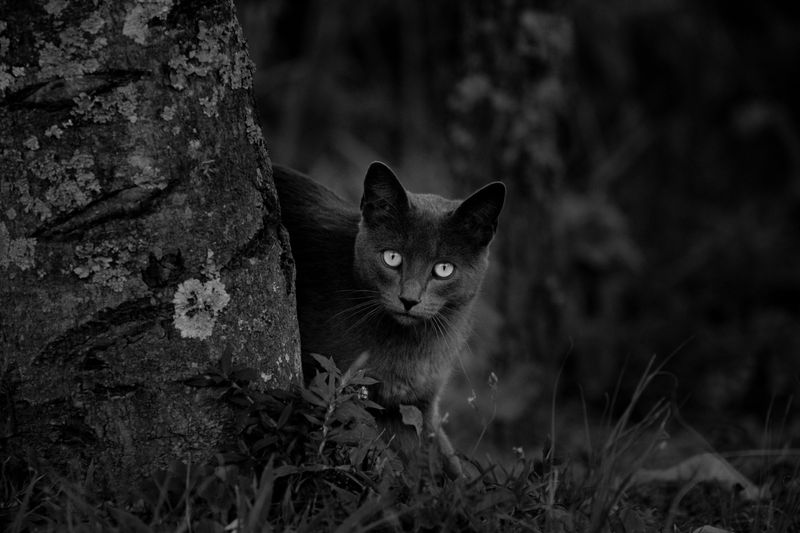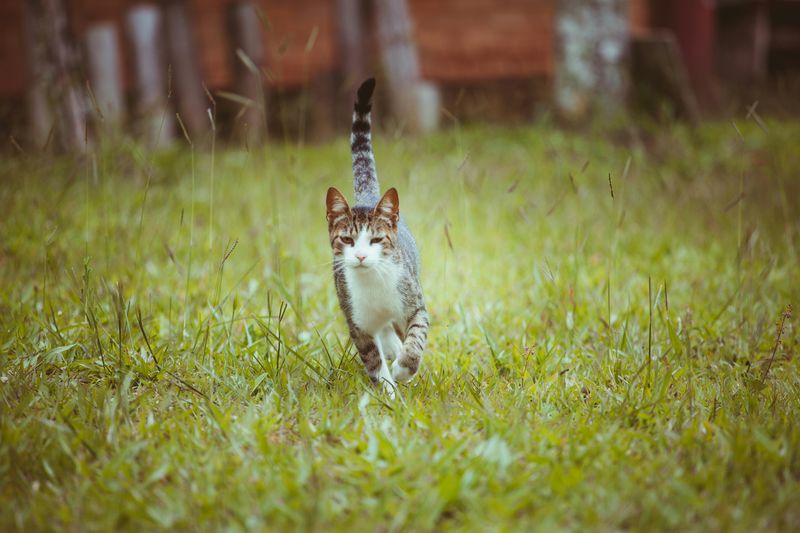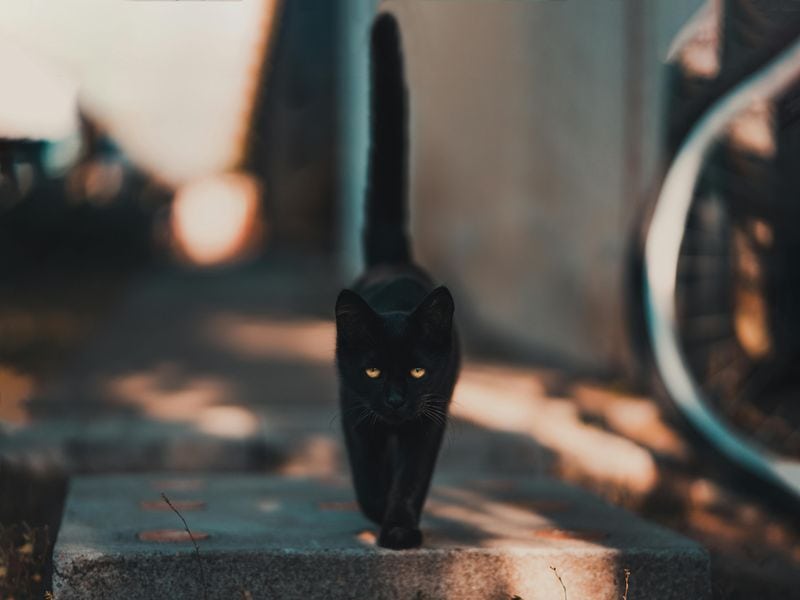Cats have prowled through the shadows of witchcraft lore for centuries, creating one of history’s most enduring supernatural connections.
From medieval Europe to modern Halloween decorations, these mysterious felines appear alongside witches in countless cultural representations.
The relationship between cats and witchcraft isn’t just coincidence – it’s rooted in fascinating historical, behavioral, and symbolic connections that have shaped our perceptions of both.
1. Night Vision Masters
Those glowing eyes peering through darkness weren’t just creepy to medieval folks – they were downright supernatural. Cats’ remarkable ability to navigate in near-total darkness made them seem magical in times when people feared what lurked in the night.
Their eyes reflect light in an eerie way that can appear ghostly or demonic to the superstitious. This nocturnal prowling perfectly aligned with beliefs about witches’ midnight activities and sabbath gatherings.
When most people huddled indoors after sunset, cats freely roamed, hunting and exploring with confidence. Their comfort in darkness linked them to the hidden world of magic that supposedly thrived beyond the safety of firelight.
2. Ancient Deity Connections
Long before the witch trials, cats held sacred status in several ancient religions. The Egyptian goddess Bastet, depicted with a cat’s head, wielded immense power over protection, fertility, and the home – domains later associated with witchcraft.
Norse goddess Freyja rode a chariot pulled by magical cats, symbolizing her connection to both love and sorcery. These divine associations never fully disappeared, even as Christianity spread across Europe.
When the Church began associating pagan deities with demonic forces, cats’ sacred status transformed into something sinister. Their ancient divine connections became twisted into evidence of unholy alliances with witches and dark magic.
3. The Perfect Familiars
“Who’s that shadowy companion always by the witch’s side?” During witch hunt hysteria, people believed witches kept supernatural helper spirits called familiars. Cats, with their independent nature and tendency to form bonds with single caretakers, fit the description perfectly.
Court records from witch trials frequently mentioned cats as evidence of witchcraft. Some confessions (obtained through torture) even claimed cats could speak, deliver messages, or perform magical tasks for their witch masters.
Black cats especially suffered from this association. Their dark fur symbolized evil and bad luck in Christian Europe, making them particularly suspicious as potential familiars for those practicing forbidden magic.
4. Independent Spirit Kindred
Cats refuse to be controlled – a quality they share with the stereotypical witch. While dogs obey commands, cats follow their own mysterious agenda, mirroring how witches supposedly defied social norms and religious authority.
A cat’s unpredictable behavior – appearing and disappearing at will, observing silently from hidden perches – echoed fears about witches’ supposed ability to move unseen through communities. Their self-sufficient nature aligned with the independence that made certain women targets for witch accusations.
Even a cat’s body language – arched backs, hissing, and sudden movements – could seem threatening and unnatural to superstitious observers. This independent spirit created a natural kinship between cats and those accused of practicing forbidden magic.
5. Victims of the Same Persecution
Pope Gregory IX’s infamous 1233 declaration linked black cats directly to Satan worship, triggering centuries of feline persecution. Communities routinely killed cats – especially black ones – believing this would protect them from evil influences and witchcraft.
The tragic irony? Killing cats allowed rat populations to explode, worsening plague outbreaks that were often blamed on… witchcraft. Both cats and accused witches faced violence from the same fear-driven mobs.
In some regions, cats were thrown from towers or burned alongside convicted “witches” in gruesome public spectacles. This shared history of persecution cemented the association between cats and witchcraft in cultural memory, persisting in our Halloween decorations and superstitions today.

